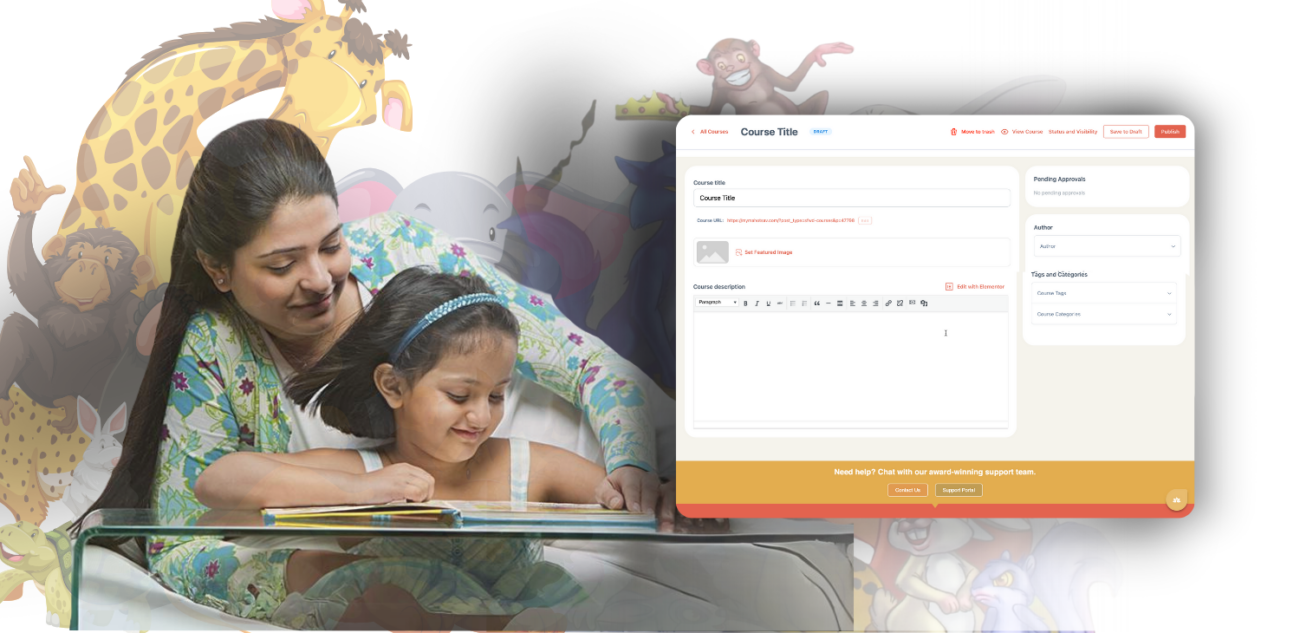
A Step-by-Step Guide to Event Planning
Embarking on the journey of event planning can be both exhilarating and overwhelming. Whether you’re organizing a wedding, corporate conference, or community fundraiser, the key to success lies in meticulous planning and strategic execution. From setting clear objectives and understanding your audience to selecting the perfect venue and managing logistics, we’ll cover all aspects of event planning to help you create memorable experiences for your attendees. Let’s dive in and master the art of event planning together!
Set Clear Objectives
Before diving into event planning, it’s crucial to clearly define your goals and objectives. What do you aim to achieve from this event? Setting clear objectives from the start will shape your overall strategy and approach.
Consider what the purpose of your event is. Are you hosting a fundraising gala to support a cause? Looking to generate brand awareness through a product launch party? Celebrating a company milestone? Identifying the core reasons for hosting an event will inform decisions through the planning process.
For example, if fundraising is your main goal, you’ll want to focus your efforts on promotion and partnerships to drive ticket sales. If it’s brand awareness, you may invest more in the experience and production value to get people talking. Defining objectives allows you to prioritize certain elements over others.
Beyond identifying your overall goals, also define success metrics. How will you know if your event achieves what you want? Setting quantifiable targets like number of attendees, media mentions, social media engagement, or funds raised gives you something to track and optimize around.
Taking the time upfront to clarify your vision, purpose, and measures of success will provide focus and direction. It ensures you stay true to your event’s intent versus getting distracted by superfluous details. Keep referring back to your objectives as you make decisions through the planning process..
Understand Your Audience
Knowing your audience is the key to planning an event that truly resonates with them. Start by conducting thorough market research on the demographics, psychographics, needs, interests, and values of your target audience.
Send out surveys, analyze social media conversations, and review past event data to gain insights. Understand what motivates them and what problems they face that your event can help solve.
Learn about their preferences in terms of activities, entertainment, food, decor, and ambiance. For example, a youthful audience may appreciate music concerts and games, while an older business crowd may prefer formal networking sessions.
Take the time to put yourself in their shoes. What experience would delight and engage them? What added value can you provide? Shape your event to align with their expectations.
Once you have a solid understanding of your attendees, you can tailor all aspects of your event for maximum appeal. Craft relevant messaging and promotions to pique their interest. Select speakers, topics, and activities they would enjoy. Choose a venue and design that caters to their needs.
The more your event resonates with your target demographic, the more successful it will be. Invest time upfront getting to know your audience inside and out. This insight will allow you to create an experience that truly speaks to who they are and what they care about.
Select the Perfect Venue
Choosing the right venue is one of the most important decisions when planning an event. The venue sets the overall tone and directly impacts the attendee experience. When selecting a venue, here are some key factors to consider:
Location – Convenience is key. Choose a venue that’s easily accessible to your expected audience. Analyze transportation options, parking availability, and proximity to hotels. The location should align with your event vision.
Capacity – Make sure the venue can comfortably accommodate your estimated guest count. Allow room for staging, booths, and circulation. Too large or too small a venue can negatively impact ambiance.
Amenities – Determine which amenities are must-haves vs. nice-to-haves. For example, onsite catering and A/V equipment may be essential. Prioritize amenities that directly enhance the event program.
Ambiance – The venue should complement your desired atmosphere. Factors like design, décor and acoustics all influence the vibe. Visit potential venues in-person to get a feel for layout and aesthetics.
Budget – Cost is often the biggest limiting factor. Research rates and negotiate if possible. Get quotes for rentals, service fees and labor. Find a venue that fits within your budget parameters to avoid overspending.
Theme & Goals – Most importantly, the venue should align with your event theme, brand and goals. If hosting a fundraising gala, choose an upscale hotel ballroom over a casual theater. Seek venues that purposefully support your event vision.
Taking the time to find the perfect venue lays the foundation for event success. Balancing these factors will lead you to a venue that wows attendees while staying within budget.
Budget Wisely
Developing a realistic budget is crucial to ensure your event stays financially on track. When budgeting, be sure to identify and account for all potential expenses, both big and small. These may include:
-
Venue rental fees: Consider rental costs for the venue space itself as well as any equipment you may need them to provide, like chairs, tables, audio/visual capabilities, etc.
-
Food and beverage: Catering, drinks, and any related service costs like bartenders or wait staff can add up quickly. Get quotes from multiple vendors.
-
Entertainment: Will you have music, performers, or speakers? Factor in those fees plus any related needs like equipment rental or travel costs.
-
Staffing: Hire any temporary event staff you’ll require and account for hourly rates plus overtime.
-
Marketing and promotion: Budget for all advertising, printed materials, signage, and more.
-
Rentals: Tents, furniture, linens, dishware, and decor will incur rental fees.
-
Transportation: Consider any shuttle services, valet parking, or costs to transport materials.
-
Permits and insurance: Don’t forget any required permits, licenses, or event insurance.
Once you’ve identified all potential expenses, establish a realistic total budget with buffers built in for incidentals. Prioritize spending based on your event goals and allocate more funds to critical elements like food and beverage over decor. Track costs against your budget throughout planning to avoid going over. With careful planning, you can throw a memorable event that aligns with your budget.
Create a Detailed Timeline
A comprehensive timeline is crucial for executing a seamless event from start to finish. Begin developing your timeline at least 6-12 months in advance if organizing a large-scale event. This gives you ample time to book vendors, plan logistics, and promote the event.
Identify key milestones and deadlines and work backwards from your event date. Major milestones may include venue booking, sending invitations, finalizing menus, etc. For each milestone, set a deadline that provides a comfortable buffer.
Next, break down tasks and assign ownership. Delegate responsibilities across your team and volunteers. For example, assign someone to oversee venue layout, catering, registration, entertainment, etc.
Create a shared calendar and set reminders for deadlines. Continuously monitor progress to ensure all tasks get completed on schedule. If anything falls behind, quickly implement a plan to get back on track. Having an early buffer will help absorb hiccups or delays.
As the event approaches, increase check-ins with your team. Conduct weekly or daily stand-up meetings to discuss outstanding items and surface any new issues. Maintain constant communication and collaboration to execute the timeline seamlessly. Adjust as needed while keeping focused on the end goal – a successful event!
Promote Your Event
Effective marketing is crucial for driving attendance to your event. Use a strategic mix of online and offline marketing channels to promote your event far and wide.
-
Leverage social media: Create event pages and posts on platforms like Facebook, Instagram and Twitter. Share teasers, announcements, photos and videos to generate hype. Run contests and polls to encourage shares and engagement.
-
Email marketing: Send out save-the-date emails, ticket sale announcements, newsletters and reminders to your mailing list. Craft compelling subject lines and content to drive sign-ups.
-
Print/radio/TV ads: Run ads in local newspapers, magazines, billboards, radio stations and TV channels. Focus on publications and programs your target audience follows.
-
Partnerships: Collaborate with relevant brands, influencers, local businesses and community organizations to co-promote your event. Offer cross-promotions and influencer promotions to expand your reach.
-
Website/blog: Create a dedicated website for your event with all the key details. Publish blog posts and FAQs to provide valuable information to attendees.
-
Word-of-mouth: Encourage existing attendees to invite friends and family by offering referral discounts and rewards. Satisfied guests can be powerful brand advocates.
-
PR outreach: Pitch your event to relevant media outlets. Secure features, interviews, sponsorships and giveaway opportunities to gain publicity.
-
Flyers/posters: Distribute printed flyers and posters in high-traffic local areas, noticeboards, cafes, shops and community spaces.
Create compelling and shareable content across channels to generate excitement about your event. Use striking visuals, interesting trivia, engaging stories and clear calls-to-action in your campaigns. Tailor content and messaging to resonate with your diverse target audience. Effective multi-channel promotion is key to driving awareness, engagement and sign-ups for your event.
Manage Logistics Seamlessly
A successful event requires seamless logistics to ensure a smooth experience for attendees. Here are some key areas to focus on:
Coordinate Transportation
-
Arrange transportation to and from the venue if needed. This may include shuttle buses, ride shares, or parking arrangements.
-
Provide clear directions and timing for transportation options in your communication with attendees.
-
Have staff on hand to direct guests during transport at the beginning and end of the event.
Streamline Registration & Check-In
-
Set up a self-service online registration system to collect attendee information ahead of time.
-
Have a check-in area at the venue with ample staff to get attendees signed in efficiently.
-
Use name badges, wristbands, or other systems to identify registered guests.
-
Offer early check-in for speakers, VIPs, or others who need it.
Organize Seating
-
Determine seating arrangements based on expected attendance and venue capacity.
-
Use reserved tables for speakers, VIPs, sponsors, etc.
-
Have ushers available to help direct attendees to open seating areas.
-
Leave some extra seating capacity for last-minute registrations.
Prepare Technical Requirements
-
Identify A/V needs for presentations, performances, etc.
-
Provide microphones, projectors, internet connectivity as required.
-
Have backup equipment available or a tech support team on standby.
-
Test all equipment thoroughly prior to the event.
Have Contingency Plans
-
Identify potential issues such as weather, lower turnout, technical failures.
-
Develop backup plans to address these challenges smoothly if they arise.
-
Brief staff on contingency protocols so you can pivot seamlessly.
With careful coordination across transportation, registration, seating, tech requirements, and backup plans, you can deliver a seamless event experience that makes attending easy and enjoyable for your guests.
Engage Your Attendees
Your event is about more than just the agenda – it’s about bringing people together to network, collaborate, and forge new relationships. Make your event memorable by providing interactive experiences that encourage participation, conversation, and connections between attendees.
-
Host workshops, breakout sessions, or hands-on demonstrations to get people actively involved. Let attendees learn by doing rather than just listening passively.
-
Build in networking opportunities through speed networking sessions, mixers, or designated networking areas. Set the stage for meaningful business connections.
-
Use icebreakers and team building activities to get people interacting. Foster new relationships in a fun, relaxed environment.
-
Set up games, contests, prizes, or other activities that encourage friendly competition and participation. Make learning and networking a playful experience.
-
Use technology like event apps and social media to facilitate connections before, during, and after your event.
-
Create spaces that are conducive to conversation, with comfortable seating arrangements and a relaxing vibe.
Don’t just focus on the program – focus on bringing people together. By providing interactive experiences and encouraging participation, you’ll create an event that forges new relationships and leaves lasting memories.
Execute Flawlessly
The day of your event has arrived and it’s time to execute everything seamlessly! This is when all your planning and preparation will come together, so stay focused and follow your plan.
Have a detailed plan and timeline: Refer frequently to your timeline leading up to and during the event. Check off tasks as they are completed and make sure nothing falls through the cracks. Assign someone to oversee the timeline and keep things running on schedule.
Assign roles and responsibilities: Make sure each team member knows their specific duties and is ready to take ownership of their tasks. From registration to catering to tech support, every area should have a point person to handle it smoothly.
Communicate clearly with your team: Keep your team updated in real-time on any changes or issues that arise. Designate channels, like group chats or walkie-talkies, to facilitate constant communication. Empower people to make decisions and troubleshoot problems independently within their roles.
Anticipate and prepare for contingencies: Have backup plans for potential issues like technical glitches, lower than expected attendance, or vendor no-shows. Brief your team on contingency protocols so you can pivot seamlessly if needed.
Monitor and adapt as needed: As the event unfolds, continue monitoring operations and participant engagement. Make real-time adjustments to the schedule, activities, or staffing to optimize the experience.
With extensive planning and preparation, your team will be ready to handle anything during event execution. Stay cool under pressure, rally your team, and deliver an incredible event.
Follow Up and Get Feedback
The event may be over, but your work isn’t done yet. Following up and gathering feedback is crucial for improving your next event.
Send Thank You Notes and Surveys to Attendees
After the event concludes, send thank you notes to attendees to show your appreciation for their participation. Include a short survey to gather feedback on their experience. Ask questions to gauge satisfaction levels and identify areas for improvement. Offer incentives like discounts on future events to encourage survey participation.
Review Feedback to Improve Future Events
Carefully review survey results and feedback to gain insights into what worked well and what didn’t. Look for common themes around program content, logistics, venue, food, and more. Document lessons learned and use feedback to enhance future events.
Share Event Highlights on Social Media
Keep the event momentum going by sharing highlights, photos, and videos on social media. Tag attendees, sponsors, and partners to expand your reach. Social media is a great channel for continuing engagement and showcasing event success.
Following up with attendees provides valuable insights while strengthening relationships for your next event. Collecting feedback shows you care about creating meaningful experiences and are committed to continual improvement.

 Testing the Simple Product
Testing the Simple Product  Classic wooden chair
Classic wooden chair  Garlic Powder
Garlic Powder 



